Selecting the right Random Access Memory (RAM) is a critical step in building a balanced and high-performing PC, especially when using AMD’s Ryzen 3000 series processors. CPUs like the Ryzen 5 3600, Ryzen 7 3700X, and Ryzen 9 3900X are known for their impressive multi-core performance, but unlocking their full potential is heavily dependent on the paired memory kit. The architecture of these processors means that RAM speed and latency have a direct and significant impact on overall system responsiveness and application performance.
This guide provides a purely informational, expert analysis of how to choose the right memory for these specific Ryzen CPUs. It delves into the technical details that matter, from frequency and timings to capacity, and presents a detailed breakdown of several popular DDR4 kits to illustrate these principles. The goal is to equip you with the knowledge needed to make an informed decision based on objective data and performance metrics.
Understanding the Crucial Role of RAM in Ryzen 3000 Performance
The performance of Ryzen 3000 CPUs is intrinsically linked to RAM speed due to AMD’s Infinity Fabric (FCLK). This is the interconnect that allows different components within the CPU, such as the core complexes (CCDs) and the I/O die, to communicate. The speed of the Infinity Fabric is directly tied to the memory clock (MCLK).
For optimal performance, the goal is to run the FCLK and MCLK in a 1:1 ratio. For instance, with DDR4-3600 RAM (which has an actual clock of 1800MHz), the ideal FCLK would also be 1800MHz. This synchronized operation minimizes latency and allows the CPU to operate at its peak efficiency. While most Ryzen 3000 CPUs can comfortably achieve a 1:1 ratio with DDR4-3200 and DDR4-3600 memory, pushing beyond that can sometimes require manual tuning. Proper RAM selection and configuration are therefore fundamental aspects of system tuning. Before installing new modules, it’s important to understand what should be done prior to the installation of RAM onto the motherboard.
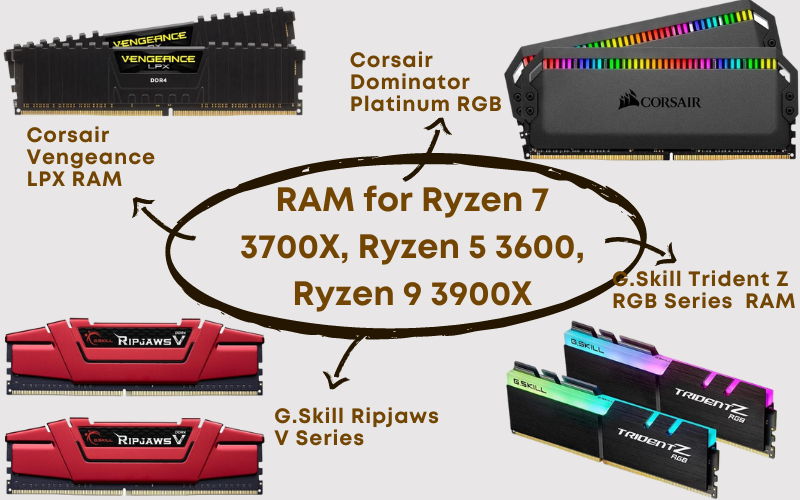
Detailed Comparison of RAM Kits for Ryzen 3000 CPUs
This table offers a comprehensive, at-a-glance comparison of the key specifications for the six RAM kits analyzed in this guide.
| Feature | Corsair Vengeance LPX | Crucial Ballistix | TEAMGROUP T-Force Vulcan Z | G.Skill Trident Z RGB | Corsair Dominator Platinum RGB | G.Skill Ripjaws V |
| Capacity | 64GB (2 x 32GB) | 16GB (2 x 8GB) | 16GB (2 x 8GB) | 16GB (2 x 8GB) | 32GB (2 x 16GB) | 16GB (2 x 8GB) |
| Type | DDR4 | DDR4 | DDR4 | DDR4 | DDR4 | DDR4 |
| Speed (MHz) | 3200 | 3200 | 3000 | 3200 | 3200 | 3200 |
| CAS Latency | CL16 | CL16 | CL16 | CL16 | CL16 | CL16 |
| Timings | 16-20-20-38 | 16-18-18-36 | 16-18-18-38 | 16-18-18-38 | 16-18-18-36 | 16-18-18-38 |
| Voltage | 1.35V | 1.35V | 1.35V | 1.35V | 1.35V | 1.35V |
| Heatsink | Low-Profile Aluminum | Anodized Aluminum | Aluminum Alloy | Brushed Aluminum | Aluminum + DHX Cooling | Aluminum |
| RGB Lighting | No | No | No | Yes | Yes (Capellix) | No |
| Height | ~34 mm | ~39 mm | ~32 mm | ~44 mm | ~55 mm | ~42 mm |
| Target Use | High-capacity workstations | All-around performance | Budget-conscious builds | Aesthetics & performance | Premium, high-end builds | Performance-focused builds |
Key Factors in Choosing RAM for Your Ryzen Processor
When evaluating RAM, it’s essential to look beyond just the capacity. For Ryzen 3000 CPUs, the interplay of speed, latency, and rank configuration determines the final performance outcome. A compatible motherboard for the Ryzen 5 3600 or its more powerful siblings is also a prerequisite for stability.
Memory Speed (Frequency) and the Infinity Fabric
As mentioned, memory frequency, measured in Megahertz (MHz), is paramount.
- DDR4-3200: Represents a fantastic price-to-performance point. It offers a significant uplift over slower speeds and is easily handled by the memory controllers on the 3600, 3700X, and 3900X.
- DDR4-3600: Widely considered the “sweet spot” for this generation. It allows the Infinity Fabric to run at a high speed (1800MHz) in a stable 1:1 ratio, providing a noticeable performance benefit in both gaming and productivity tasks.
CAS Latency and Timings
CAS (Column Address Strobe) Latency, often abbreviated as CL, is the delay between the memory controller telling a memory module to access a particular memory column and the data being available. A lower CL number indicates better performance.
Example: A DDR4-3600 CL16 kit will generally outperform a DDR4-3600 CL18 kit. Similarly, a DDR4-3200 CL14 kit can sometimes match or even exceed the performance of a DDR4-3600 CL18 kit in certain applications due to its much lower latency.
Look at the full timing sequence (e.g., 16-18-18-38). Lower numbers across the board are better, but the first number (CAS Latency) has the most significant impact.
RAM Capacity: How Much Is Enough?
The required capacity depends entirely on the workload.
- 16GB (2 x 8GB): This is the standard for most gaming and general productivity builds. It provides ample room for modern games, web Browse, and mainstream applications. For questions like “how much RAM should I allocate to Minecraft,” 16GB is more than sufficient for the entire system.
- 32GB (2 x 16GB): Recommended for users engaged in heavy multitasking, content creation (video editing, 3D rendering), or running memory-intensive simulation games. A powerful GPU for the Ryzen 7 3700X combined with 32GB of RAM creates a very capable workstation.
- 64GB (2 x 32GB) or more: This capacity is typically reserved for professional workstations and servers handling extremely large datasets, complex scientific modeling, or high-resolution video editing with many layers and effects.
Single-Rank vs. Dual-Rank Modules
Memory modules are organized into “ranks.” A simplified way to think of this is that a dual-rank module provides two lanes for the memory controller to access, which can improve performance through a technique called rank interleaving. For Ryzen 3000 CPUs, using a dual-rank configuration (often achieved with two dual-rank modules or four single-rank modules) can provide a performance uplift of 5-10% in some applications. Most 16GB and 32GB modules are dual-rank, while most 8GB modules are single-rank.
An In-Depth Analysis of 6 DDR4 RAM Kits
The following sections provide an objective analysis of six distinct DDR4 memory kits, highlighting their features and suitability for different types of users and systems built around the Ryzen 3600, 3700X, or 3900X.
1. Corsair Vengeance LPX 64GB (2x32GB) DDR4-3200
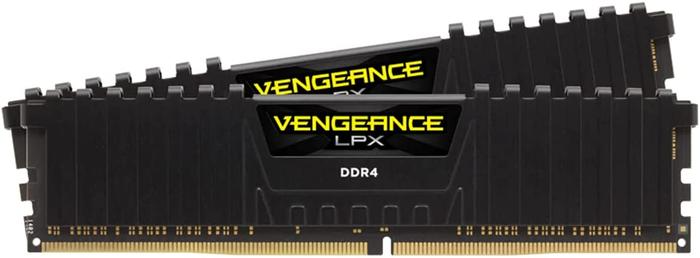
Key Specifications
- Capacity: 64GB (2 x 32GB)
- Speed: 3200MHz
- Timings: 16-20-20-38
- Voltage: 1.35V
- Notable Feature: Low-profile heat spreader (~34mm height)
Analysis
The Corsair Vengeance LPX line is renowned for its reliability and compatibility. This specific 64GB kit is aimed squarely at power users and professionals. The high capacity is ideal for virtual machines, 4K/8K video editing, and complex data analysis.
The most significant physical characteristic is its low-profile design. The heat spreaders are short, making this kit an excellent choice for Small Form Factor (SFF) builds or systems using large air CPU coolers that might otherwise cause RAM clearance issues. While its timings are not the tightest, the sheer capacity and solid 3200MHz speed make it a workhorse module for memory-intensive tasks.
- Ideal Use Cases: Professional workstations, content creation builds with large CPU air coolers, users requiring maximum memory capacity.
- Considerations: Timings are looser compared to performance-oriented 16GB or 32GB kits.
2. Crucial Ballistix 16GB (2x8GB) DDR4-3200

Key Specifications
- Capacity: 16GB (2 x 8GB)
- Speed: 3200MHz
- Timings: 16-18-18-36
- Voltage: 1.35V
- Notable Feature: Excellent reputation for overclocking potential.
Analysis
Though the Ballistix line has been discontinued by Crucial, these kits remain a benchmark for performance and value. The combination of 3200MHz speed and tight CL16 timings provides a balanced profile that works exceptionally well with Ryzen 3000 series CPUs.
Historically, these modules were favored by enthusiasts for their use of high-quality memory chips (often from Micron) that provided significant manual overclocking headroom. For users who prefer a “set it and forget it” approach, enabling the XMP/DOCP profile in the motherboard’s BIOS delivers excellent out-of-the-box performance for gaming and general use. Finding the option to enter the motherboard BIOS is the first step to enabling these performance profiles.
- Ideal Use Cases: Gaming rigs, general-purpose desktops, builds focused on strong price-to-performance.
- Considerations: As a discontinued product line, availability may be limited to second-hand markets.
3. TEAMGROUP T-Force Vulcan Z 16GB (2x8GB) DDR4-3000
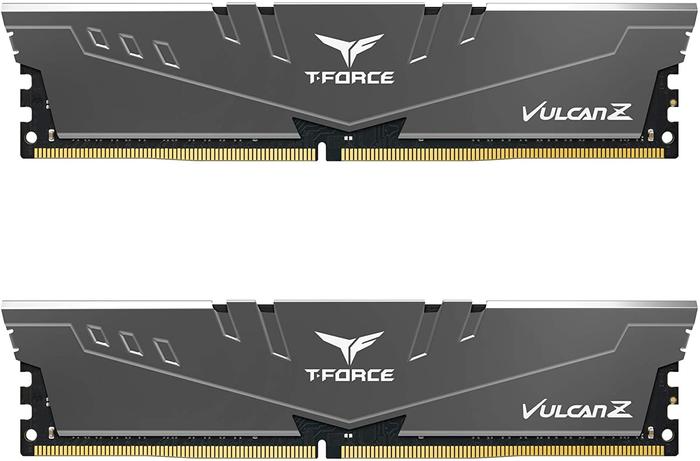
Key Specifications
- Capacity: 16GB (2 x 8GB)
- Speed: 3000MHz
- Timings: 16-18-18-38
- Voltage: 1.35V
- Notable Feature: Low module height (~32mm) and strong value proposition.
Analysis
The T-Force Vulcan Z kit is a compelling option for builders on a strict budget. While the 3000MHz speed is slightly below the 3200MHz recommendation, it still offers a substantial performance level for Ryzen 3000 CPUs, far exceeding slower 2400MHz or 2666MHz kits. The CL16 timings are respectable for this speed tier.
Its simple, effective aluminum heat spreader contributes to its very low height of only 32mm, ensuring compatibility with virtually any CPU cooler. This kit demonstrates that a capable gaming PC can be assembled without allocating a disproportionate amount of the budget to RAM.
- Ideal Use Cases: Entry-level to mid-range gaming PCs, budget-focused builds.
- Considerations: The 3000MHz speed leaves some performance on the table compared to 3200MHz or 3600MHz kits.
4. G.Skill Trident Z RGB Series 16GB (2x8GB) DDR4-3200
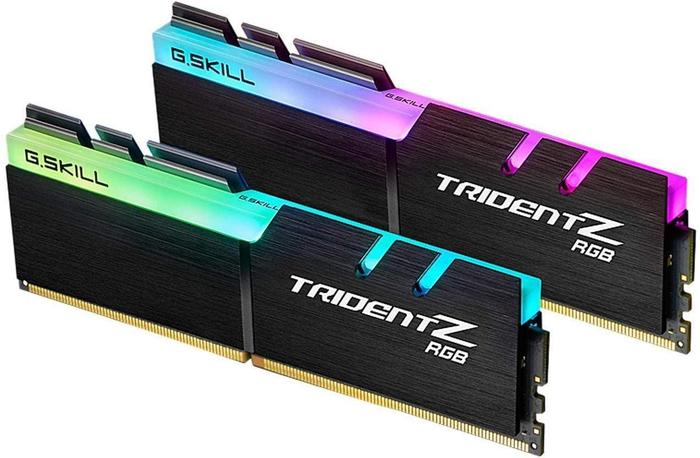
Key Specifications
- Capacity: 16GB (2 x 8GB)
- Speed: 3200MHz
- Timings: 16-18-18-38
- Voltage: 1.35V
- Notable Feature: Vibrant, customizable full-length RGB light bar.
Analysis
The G.Skill Trident Z RGB series successfully merges strong performance with striking aesthetics. This 16GB kit, operating at 3200MHz with CL16 timings, hits the price-to-performance sweet spot for the vast majority of Ryzen 3000 users. It provides a smooth experience in gaming and productivity while serving as a visual centerpiece.
The main draw is the uncovered light bar, which provides fluid and vivid RGB effects controllable via G.Skill’s software or synced with motherboard lighting systems from manufacturers like ASUS, MSI, and Gigabyte. While taller than non-RGB modules (~44mm), it fits in most standard ATX cases without issue. If aesthetics are a priority alongside performance, this is a benchmark product. For those building visually coordinated systems, pairing this with some of the best airflow PC cases can create a stunning result.
- Ideal Use Cases: Visually focused builds, RGB enthusiasts, high-performance gaming rigs.
- Considerations: Taller module height requires checking CPU cooler clearance.
5. Corsair Dominator Platinum RGB 32GB (2x16GB) DDR4-3200
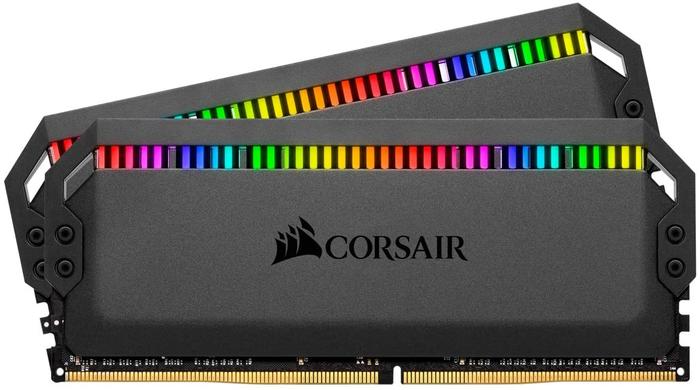
Key Specifications
- Capacity: 32GB (2 x 16GB)
- Speed: 3200MHz
- Timings: 16-18-18-36
- Voltage: 1.35V
- Notable Feature: Premium build quality with patented DHX cooling and Capellix RGB LEDs.
Analysis
The Dominator Platinum RGB line represents Corsair’s premium offering, characterized by superior build quality, tightly screened memory ICs, and a unique aesthetic. This 32GB kit is designed for high-end builds where both performance and appearance are paramount. The 3200MHz speed and tight CL16 timings are an excellent match for a Ryzen 7 3700X or Ryzen 9 3900X.
Its defining features are the robust construction and advanced cooling, which includes heat dissipation through both the heat spreader and the PCB itself (DHX cooling). The lighting is powered by 12 individually addressable, ultra-bright Capellix LEDs per module, which are brighter and more efficient than conventional LEDs. This is a top-tier choice for users building an ultimate system, though its tall profile (~55mm) demands careful consideration of case and cooler compatibility.
- Ideal Use Cases: High-end enthusiast builds, showpiece systems, users prioritizing build quality and advanced RGB.
- Considerations: Very tall heat spreaders can conflict with many air coolers. This is a premium-priced product.
6. G.Skill Ripjaws V Series 16GB (2x8GB) DDR4-3200
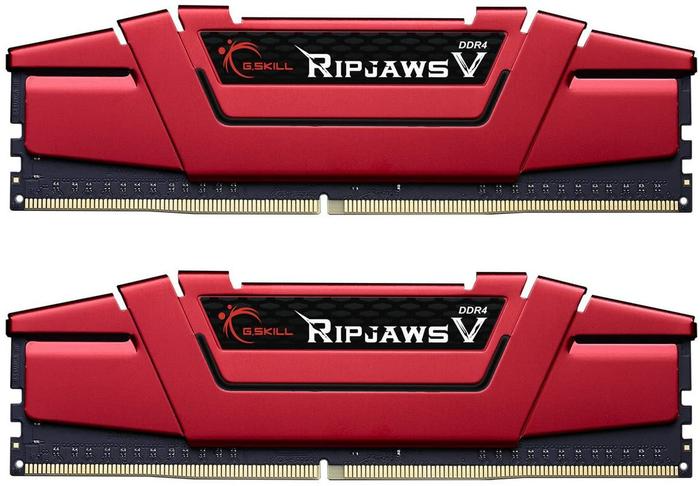
Key Specifications
- Capacity: 16GB (2 x 8GB)
- Speed: 3200MHz
- Timings: 16-18-18-38
- Voltage: 1.35V
- Notable Feature: Performance-focused design with no RGB.
Analysis
The G.Skill Ripjaws V series is a long-standing favorite among system builders who prioritize raw performance over visual flair. This kit provides the ideal 16GB capacity and 3200MHz speed for a Ryzen 5 3600 or 3700X gaming build. By forgoing RGB lighting, it often presents a better value than its illuminated counterparts.
The modules are rigorously tested for compatibility and stability across a wide range of motherboards. The heat spreader design is aggressive but functional, providing effective thermal management during extended use. At a height of 42mm, it offers better clearance than many RGB-equipped kits, making it a versatile choice for a wide variety of builds. It is a direct and effective solution for users who want reliable, fast memory without added complexity.
- Ideal Use Cases: Performance-first builds, non-RGB systems, users seeking maximum value and stability.
- Considerations: The aesthetic may not appeal to all users.
Frequently Asked Questions (FAQ)
What is the optimal RAM speed for a Ryzen 3600, 3700X, or 3900X?
For the Ryzen 3000 series, DDR4-3600 is widely considered the “sweet spot” as it allows the CPU’s Infinity Fabric clock (FCLK) to run at a synchronized 1800MHz, minimizing latency. However, DDR4-3200 offers nearly the same real-world performance for a lower cost and is an excellent alternative.
Is 3200MHz RAM still a good choice for these Ryzen CPUs?
Yes, absolutely. A DDR4-3200 kit with good timings (like CL16 or CL14) provides excellent performance and is a very cost-effective choice for any Ryzen 3000 series processor. The performance difference between 3200MHz and 3600MHz is often only a few percent in most applications.
How important is CAS Latency for Ryzen?
CAS Latency (CL) is very important. Ryzen CPUs are sensitive to memory latency, and a lower CL value can lead to noticeable improvements in gaming and application responsiveness. A kit with a lower latency (e.g., CL16) is preferable to one with higher latency (e.g., CL18) at the same speed.
Is it safe to enable the XMP or DOCP profile in the BIOS?
Yes, it is not only safe but highly recommended. RAM kits will run at a slower, standard speed (like 2133MHz) until you enable their advertised profile. XMP (Extreme Memory Profile) or DOCP (Direct Overclock Profile) is a one-click setting in your motherboard’s BIOS that loads the correct speed, timings, and voltage for your RAM kit. Learning how to get into the BIOS on an MSI motherboard or one from another brand is a key skill for any PC builder.
How much RAM is sufficient for gaming in 2024 and beyond?
16GB is the current standard for a modern gaming PC. It provides enough headroom for the latest titles and background applications. 32GB is becoming more common for enthusiasts who want to future-proof their systems or who also do content creation, but it is not strictly necessary for gaming alone.
Can different RAM kits or brands be mixed?
It is strongly advised not to mix different RAM kits, even if they have the same advertised speed and timings. Mismatches in the underlying memory chips and module architecture can lead to instability, crashes, or a failure to boot. It is always best to purchase a single, validated kit with the total capacity you need. If you suspect an issue, you may need to learn how to test your motherboard and memory.

Holding a Ph.D. in Computer Science, Dr. Alistair Finch is our chief PC Component Benchmark Analyst. He provides meticulous, data-driven analysis of CPUs and GPUs, moving beyond marketing claims to reveal their true performance. His guides help readers understand the intricate relationship between hardware architecture and real-world gaming frame rates.
